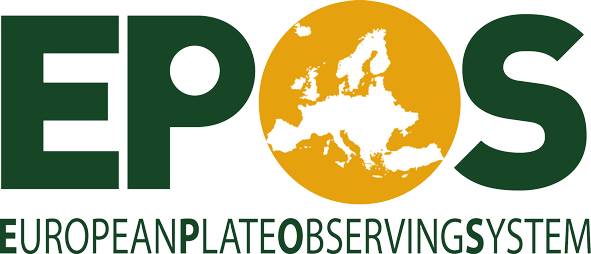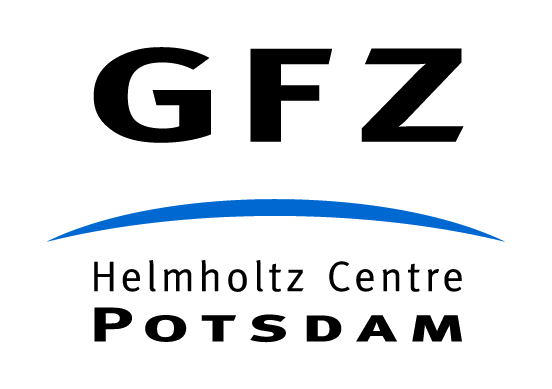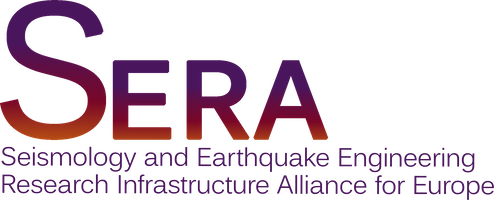Generating output, please wait ...
| mag | rhypo | PGA | SA(0.1) | ⋯ |
| ⋯ | ⋯ | ⋯ | ⋯ | ⋯ |
| ⋯ | ⋯ | ⋯ | ⋯ | ⋯ |
| ⋯ | ⋯ | ⋯ | ⋯ | ⋯ |
| Field | Type | Data type | Description |
Generating output, please wait ...
Citation
If you use the data produced by the underlying API (including data downloadable through this web portal), please cite eGSIM as:
Zaccarelli, Riccardo; Weatherill, Graeme (2020): eGSIM - a Python library and web application to select and test Ground Motion models. GFZ Data Services. https://doi.org/10.5880/GFZ.2.6.2023.007
License
The content of this site, as well as all output data produced by
the underlying API (including data downloadable through this web portal) is licensed under
CC BY 4.0


This page code samples, as well as eGSIM source code is licensed under the
GNU Affero General Public License v.3.0

References
eGSIM currently uses OpenQuake 3.15.0 and the Ground-shaking intensity models implemented in it. An exhaustive list of models and their publication references can be found here (scroll the page and click on the model of interest)
eGSIM uses the following input data (click on the links below for details such as e.g., how to cite their data alongside eGSIM in your work):
-
Seismic Hazard Harmonization in Europe (SHARE)
-
The 2020 European Seismic Hazard Model
-
Engineering strong-motion flat-file 2018
-
KiK-NET flatfile
-
K-NET flatfile
(All links provided in this page open in a new tab/window when clicked)
Legal information / Provider Identification
Imprint according to § 5 TMG (Tele Media Act) and § 55 RStV (German Interstate Treaty on Broadcasting)
Provider
The provider of this internet presence is the Helmholtz Centre Potsdam German Research Centre for Geosciences in behalf of the European Facilities for Earthquake Hazard and Risk (EFEHR), a non-profit network of organisations and community resources aimed at advancing earthquake hazard and risk assessment in the European-Mediterranean area.
Address
Helmholtz Centre Potsdam German Research Centre for Geosciences - GFZ
Telegrafenberg
14473 Potsdam, Germany
Tel.: +49 331 288 0
Website: www.gfz-potsdam.de
Legal form
The Helmholtz Centre Potsdam German Research Centre for Geosciences - GFZ is a Public Law Foundation. The GFZ is member of the Helmholtz-Gemeinschaft Deutscher Forschungszentren e.V. (Helmholtz Association of German Research Centres) .
Authorized representatives
The GFZ is legally represented by Prof. Dr. Dr. h.c. Reinhard Hüttl (Chairman of the Board and Scientific Executive Director) and Dr. Stefan Schwartze (Administrative Executive Director).
Value Added Tax ID
VAT Identification Number according to § 27a VAT Tax Act: DE138407750
Editorial Staff
Responsible editor for the contents of the web service is Prof. Dr. Fabrice Cotton (Head of Section 2.6 “Seismic Hazard and Risk Dynamics”)
Editor, conception, coordination ( www.gfz-potsdam.de )
Dr. Graeme Weatherill (scientific coordinator)
Screendesign
Dr. Riccardo Zaccarelli
Technical Realization and support
Responsible for the technical implementation is Dr. Riccardo Zaccarelli
Copyright
The texts and images on this website are protected by copyright. Copying these files or printing the publications is only permitted for private use.
All other uses, such as duplication, alteration or use of these graphics, recordings, video sequences or texts on this website in further electronic or printed publications for non-commercial and commercial purposes are not permitted without the explicit consent of the copyright holder - even if they are not labelled as a copyright protected document.
Content, which is published under the Creative Commons License may be used only in accordance with the specified license conditions.
Liability notice
The editorial staff controls and updates the available information on these websites at regular intervals. Despite all care, information, data or links may have changed in the meantime. There is no liability or guarantee for the currentness, accuracy and completeness of the information provided.
The same applies to all other websites, which are referred to by hyperlink. There is not responsibility for the content of the websites that are reached as a result of such a connection. Instead the relevant provider is always responsible for the contents of the linked pages.
In establishing the initial link, the editorial staff has reviewed the relevant external content in order to determine that they were free of illegal content at the time of linking.
If you detect errors in content or technology, please let us know.
eGSIM API documentation
A Web Application Programming Interface (API) is an interface that allows communication between systems over the web using defined URLs and data formats. While this website already represents a more intuitive form of interface for communicating with the web service — a Graphical User Interface (GUI) — an API overcomes several GUI limitations by allowing communication more programmatically and flexibly via software code.
In general, we recommend the usage of the eGSIM API through Python code and consult our online examples in Jupyter Notebook: therein, you can see how we access the API via a single main function that can also be used seamlessly in any Python module or, with slight modifications, in any programming language. However, for a more low-level approach, e.g., using command line tools like curl, or for Python users who want more configuration options in their code, here below a short documentation of the eGSIM API.
Model info
| Name(s) | Default value | Description |
|---|---|---|
| name, model | Ground shaking intensity Model(s). For any input value, any model whose name contains (case-insensitive search) the value is used. The model names are usually formatted as [AuthorYearAdditionalInformation] | |
| latitude, lat | The latitude of the geographic location for model selection. This parameter is mandatory if no model name is provided, otherwise is optional. See also parameter regionalization to configure which regionalizations will be used | |
| longitude, lon | The longitude of the geographic location for model selection. This parameter is mandatory if no model name is provided, otherwise is optional. See also parameter regionalization to configure which regionalizations will be used | |
| regionalization | (use all) | The regionalization(s) (mappings from region to model) to be used for searching the models applicable on the given geographic location (parameters latitude and longitude). If no geographic location is provided, this parameter is ignored. If missing, all implemented regionalizations will be used. Values can be chosen from global_stable, global_volcanic, share, eshm20, germany. References: Seismic Hazard Harmonization in Europe (SHARE), The 2020 European Seismic Hazard Model |
| format | json | The response data format |
Model-to-Model
| Name(s) | Default value | Description |
|---|---|---|
| model, gsim, gmm | Ground shaking intensity Model(s). Values can be chosen from 648 available models | |
| latitude, lat | The latitude of the geographic location for model selection. This parameter is mandatory if no model name is provided, otherwise is optional. See also parameter regionalization to configure which regionalizations will be used | |
| longitude, lon | The longitude of the geographic location for model selection. This parameter is mandatory if no model name is provided, otherwise is optional. See also parameter regionalization to configure which regionalizations will be used | |
| regionalization | (use all) | The regionalization(s) (mappings from region to model) to be used for searching the models applicable on the given geographic location (parameters latitude and longitude). If no geographic location is provided, this parameter is ignored. If missing, all implemented regionalizations will be used. Values can be chosen from global_stable, global_volcanic, share, eshm20, germany. References: Seismic Hazard Harmonization in Europe (SHARE), The 2020 European Seismic Hazard Model |
| imt | Intensity Measure type(s). Values can be chosen from EAS, RSD2080, MMI, IA, PGD, FAS, CAV, DRVT, PGV, RSD575, RSD595, SA, PGA (SA must be typed with its period, in seconds, e.g. SA(0.1)) | |
| magnitude, mag | Magnitude(s). Each magnitude defines a Rupture of the user-defined scenario. See also aspect, dip, hypocenter_location, initial_point, msr, rake, strike, ztor (Rupture configuration parameters, applied to all created Ruptures) | |
| distance, dist | Distances (km). Each distance defines a Site of the user-defined Scenario. See also backarc, line_azimuth, region, vs30, vs30measured, z1pt0, z2pt5 (Site configuration parameters, applied to all created Sites) | |
| aspect | 1.0 | Rupture Length / Width ≥ 0 and ≤ 1 |
| dip | 90 | Dip of rupture (deg) ≥ 0 and ≤ 90 |
| rake | 0.0 | Rake of rupture (deg) ≥ -180 and ≤ 180 |
| strike | 0.0 | Strike of rupture (deg) ≥ 0 and ≤ 360 |
| ztor | 0.0 | Top of Rupture Depth (km) ≥ 0 |
| msr, magnitude-scalerel | WC1994 | Magnitude-Area Scaling Relationship. The value must be chosen from AllenHayesInterfaceBilinear, AllenHayesInterfaceLinear, AllenHayesIntraslab, CEUS2011, CScalingMSR, GSCCascadia, GSCEISB, GSCEISI, GSCEISO, GSCOffshoreThrustsHGT, GSCOffshoreThrustsWIN, GermanyMSR, Leonard2010_SCR, Leonard2010_SCR_M0, Leonard2010_SCR_MX, Leonard2014_Interplate, Leonard2014_SCR, PeerMSR, PointMSR, StrasserInterface, StrasserIntraslab, ThingbaijamInterface, ThingbaijamStrikeSlip, WC1994, WC1994_QCSS |
| initial-point, initial_point | [0, 0] | Location on Earth (Longitude ≥ -180 and ≤ 180, Latitude ≥ -90 and ≤ 90) |
| hypocenter-location, hypocentre-location, hypocentre_location | [0.5, 0.5] | Location of Hypocenter (Along-strike fraction ≥ 0 and ≤ 1, Down-dip fraction ≥ 0 and ≤ 1) |
| vs30 | 760.0 | vs30 (m/s) |
| region | 0 | Attenuation cluster region (https://doi.org/10.1007/s10518-020-00899-9). The value must be chosen from 0 - Default or unknown, 1 - Average / Slower, 2 - Average / Faster, 3 - Fast, 4 - Average, 5 - Very slow |
| vs30measured, vs30_measured | true | Whether vs30 is measured (otherwise is inferred) |
| line-azimuth, line_azimuth | 0.0 | Azimuth of Comparison Line ≥ 0 and ≤ 360 |
| z1pt0, z1 | (inferred) | Depth to 1 km/s Vs layer (m). If missing, it will be calculated from the vs30 |
| z2pt5 | (inferred) | Depth to 2.5 km/s Vs layer (km). If missing, it will be calculated from the vs30 |
| backarc | false | Backarc Path |
| multi_header | false | Return a table with 3-rows column header (imt, type, model). Otherwise (the default), return a table with a single column header imt+" "+type+" "+model |
| format | hdf | The response data format. The value must be chosen from hdf, csv, json |
Model-to-Data
| Name(s) | Default value | Description |
|---|---|---|
| flatfile, data | The flatfile (pre- or user-defined) containing observed ground motion properties and intensity measures, in CSV or HDF format. When user-defined, it must be uploaded with the request. When pre-defined, the value must be chosen from esm2018, kiknet2024, knet2024. For a correct usage, please consult the Python notebook examples or the GUI. References: Engineering strong-motion flat-file 2018, K-NET flatfile, KiK-NET flatfile | |
| flatfile-query, data-query | Filter flatfile records (rows) matching query expressions applied on the columns, e.g.: "(mag > 6) & (rrup < 10)" (&=and, |=or) | |
| model, gsim, gmm | Ground shaking intensity Model(s). Values can be chosen from 648 available models | |
| latitude, lat | The latitude of the geographic location for model selection. This parameter is mandatory if no model name is provided, otherwise is optional. See also parameter regionalization to configure which regionalizations will be used | |
| longitude, lon | The longitude of the geographic location for model selection. This parameter is mandatory if no model name is provided, otherwise is optional. See also parameter regionalization to configure which regionalizations will be used | |
| regionalization | (use all) | The regionalization(s) (mappings from region to model) to be used for searching the models applicable on the given geographic location (parameters latitude and longitude). If no geographic location is provided, this parameter is ignored. If missing, all implemented regionalizations will be used. Values can be chosen from global_stable, global_volcanic, share, eshm20, germany. References: Seismic Hazard Harmonization in Europe (SHARE), The 2020 European Seismic Hazard Model |
| imt | Intensity Measure type(s). Values can be chosen from EAS, RSD2080, MMI, IA, PGD, FAS, CAV, DRVT, PGV, RSD575, RSD595, SA, PGA (SA must be typed with its period, in seconds, e.g. SA(0.1)) | |
| likelihood | false | compute the residuals likelihood (Scherbaum et al. 2004. https://doi.org/10.1785/0120030147) |
| normalize | true | normalize the random effects residuals (Abrahamson & Youngs (1992), Eq. 10) |
| ranking | false | Model ranking: easily assess how predictions fit the data by returning aggregate measures from the computed residuals (e.g., median, loglikelihood, EDR). With ranking, the parameters likelihood and normalize are set to true by default |
| multi_header | false | Return a table with 3-rows column header (imt, type, model). Otherwise (the default), return a table with a single column header imt+" "+type+" "+model |
| format | hdf | The response data format. The value must be chosen from hdf, csv, json |
eGSIM
a web service to explore, select and test Ground-Shaking Intensity Models
eGSIM is a web application programming interface (API) where users can perform queries in their code via configurable URLs in order to compute and retrieve model predictions of ground motions from either observed or hypothetical earthquake scenarios.
Welcome to eGSIM web portal, a graphical user interface to interact with the API:
Get ground motion model predictions from hypothetical earthquake scenarios
Find out how to compile, inspect and upload observed (or synthetic) ground motion data
Get residuals between ground motion model predictions and observed (or synthetic) ground motion data




